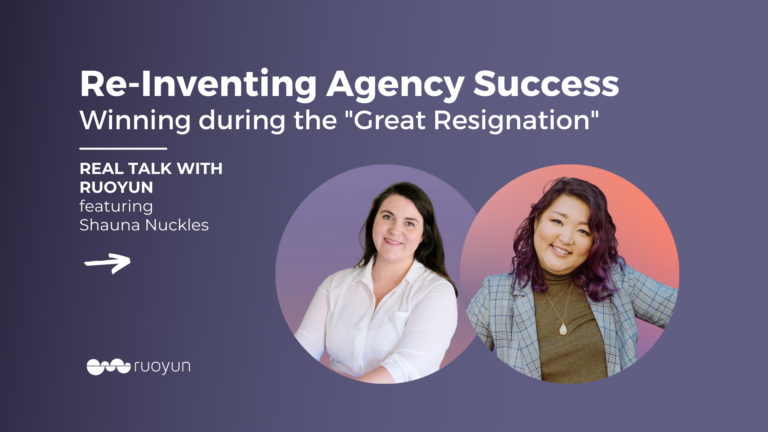Rehumanizing Culture to Amplify Individual Growth
It’s not the words we say but the actions we take
If you read in my previous blog, the Great Resignation is really the Great Re-Prioritization as individuals were given a chance to work away from toxic culture to realize that there is a different reality. Combined with a deep re-assessment of what they truly want to be happy with, many are taking the bold step and leaving their current positions. Many people are assessing the key question of how they’re contributing to a mission larger than themselves and it invites the next wave of change.
The larger conversation in this next wave is how an individual can contribute to the company and how the company can create a platform for that individual to thrive and as a company, we benefit along the way.
While I can go on forever on setting up a good culture such as values, boundaries, hiring for mindset vs skill set, and more. It boils down to the actions that we take every day and the intention behind these actions. It’s about in times of crisis or massive change, how does our company as a living breathing organism interact with our customers, employees, and community?
The process is about resetting back on the human relationship we are cultivating with our customers and our team members including:
- Brand Communication
- Goal
- Team structure
- Communication Implementation
- Feedback Loops
1. Brand Communication Externally and Internally
While many companies have reset how the brand acts, walks, and talks as a human to their customers. The same process needs to be repeated for how the brand communicates with its people. Your employees are your best advocates but you can lose their engagement if we fail to connect how we react publicly vs privately. In order to respond in a timely fashion that reflects who you are and your values, your marketing team needs to be on the same page as upper management. If you want to explore how to handle who you are in a communication crisis read my blog here.
2. Goals as a Human Brand
One of the biggest resets has been what is the end goal of the company after we’ve re-evaluated ourselves as a human brand. How have our intentions changed overall through the form of new business models, new relationships we’re looking to build that then get reflected into a new marketing playbook.
Once we define the larger end goal, some key questions to figure out the next best step includes:
- “What pillar of my marketing that I need to grow to actually move the bottom line?
- You have been working hard all year and things will change and you will go down a rabbit hole but what are you looking to accomplish?
3. Team Restructuring
After our goals are defined, the next question is, do we have the correct people on our team? It’s never a fire everyone scenario but more of “Where are my team member’s zone of genius?”
The Big Leap, written by Gay Hendricks explains that everyone has skills that fit into different categories from zones of great to genius. The end goal is to set up your team in their “Zone of Genius” which is different from a “Zone of Excellence”. On the surface, they may be good at both. However, a Zone of Excellence skill will drain your team member’s energy whereas the Zone Genius is what they’re meant to be doing and will always gain energy.
When designing your team for success, it’s about finding their zone of genius and adding new people that can make up the gaps. No one should be doing everything for we are human. Nor is it demeaning in any way if they do not match a gap. It simply means we are acknowledging that we need to expand our team to bridge these gaps.
Why does this matter? Because in the Great Re-prioritization, the individual employee is also asking “What’s my zone of genius?” Not only will they reshuffle due to cultural problems but they will reshuffle if they feel like they’re not in the right role. Part of a toxic culture is when people aren’t set up in the right roles and step into each other’s lane. This is different from collaboration where two people may bring both of their strengths to a problem. When people do not know where they stand and where they can grow, there is a fight or flight trigger. To either fight for what they assume, they think is theirs or flight and leave to another company.
Neither response is good and can cause friction in a work environment. As leaders, instead of trying to play referee, we can lean into thinking from a cultivator mentality on how we can set up our team to grow effectively.
4. Clear Communication in Implementation
As everyone is growing and getting their sea legs, there will be a learning curve. It’s part of the human experience and the best way to navigate the learning curve is through clear communication. We don’t want to assume someone knows something as we are exploring the unknown, creating a new iteration of our company.
My favorite question to ask is” What does done look like? Like REALLY look like?”
When we set expectations on “what does done looks like”, we’re allowed a moment of clarification between everyone that takes out any assumptions. It further lets us have a mindful pause to see if we can adjust this task to be even more productive in the larger picture.
5. Feedback creates sustainable growth
Finally, as everything is being brought to life it’s all about giving feedback. This re-prioritization isn’t just a one-and-done transformation but it’s a consistent tweaking process and that means it’s all about giving good feedback.
Giving good feedback is an art and can seem intimidating because it can create unintentional shame. As leaders, we can intentionally set our team up for success but it’s all about how we choose to react at the moment. It’s not about our words but our actions when the going gets tough because that’ll show your team what you really care about.
Remember feedback isn’t inherently good or bad, but it’s about how you approach it. My favorite mindful question to ask before I give feedback is:
- Is it true?
- Is it necessary and adds value?
- Is it fair and kind?
If it’s true and adds value to the team then it’s good to give that feedback. You can give tough feedback on where they can grow but it needs to be done with empathy.
Feedback loops are designed to be mindful pauses rather than rapid reactionary responses so make sure you’ve given yourself a chance to process before responding. I personally like to see where they’re coming from before I give my feedback. By asking them for their thoughts, it can create a whole new perspective that we didn’t think of and evolve the project or task further.
For more ideas, check out feedback loops from Sprout Social.
No matter where you are in the process of resetting your company towards the humans that you serve and work with, remember that it’s not a perfect process. For we are human, we are not perfect but it’s in those gaps that collaboration can create new outcomes that we’ve never imagined.
Photo by Ian Schneider






